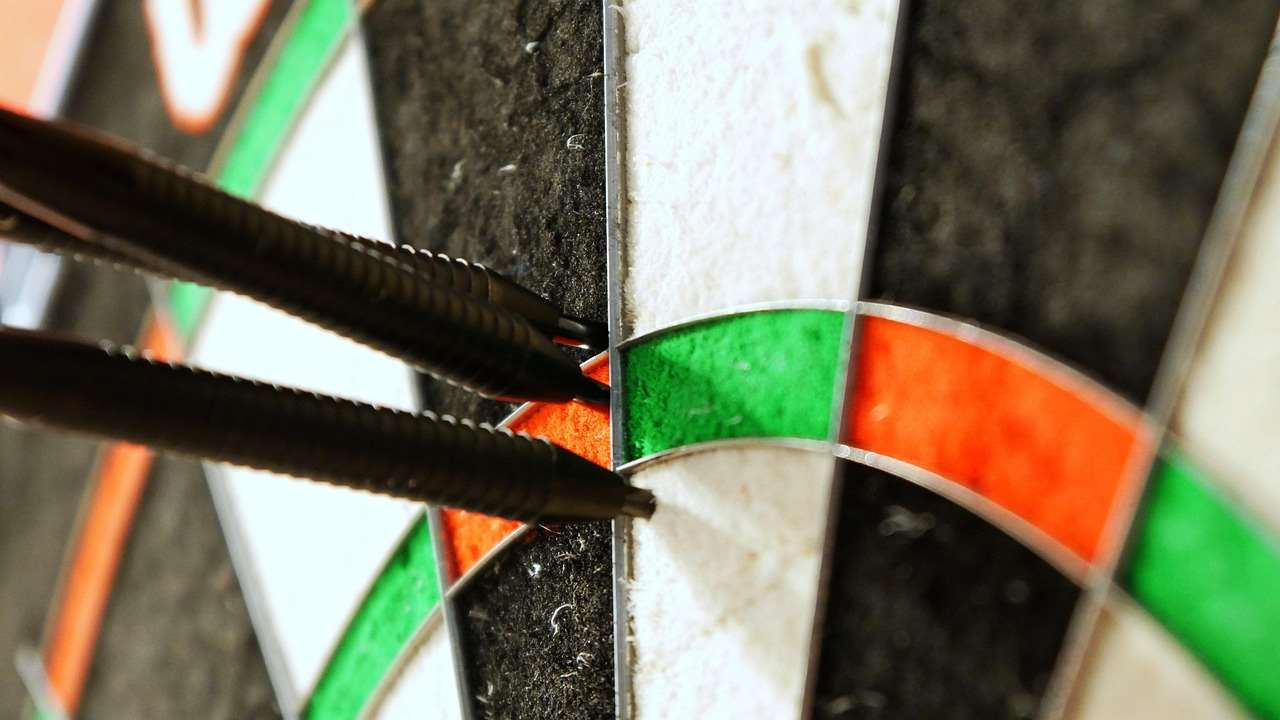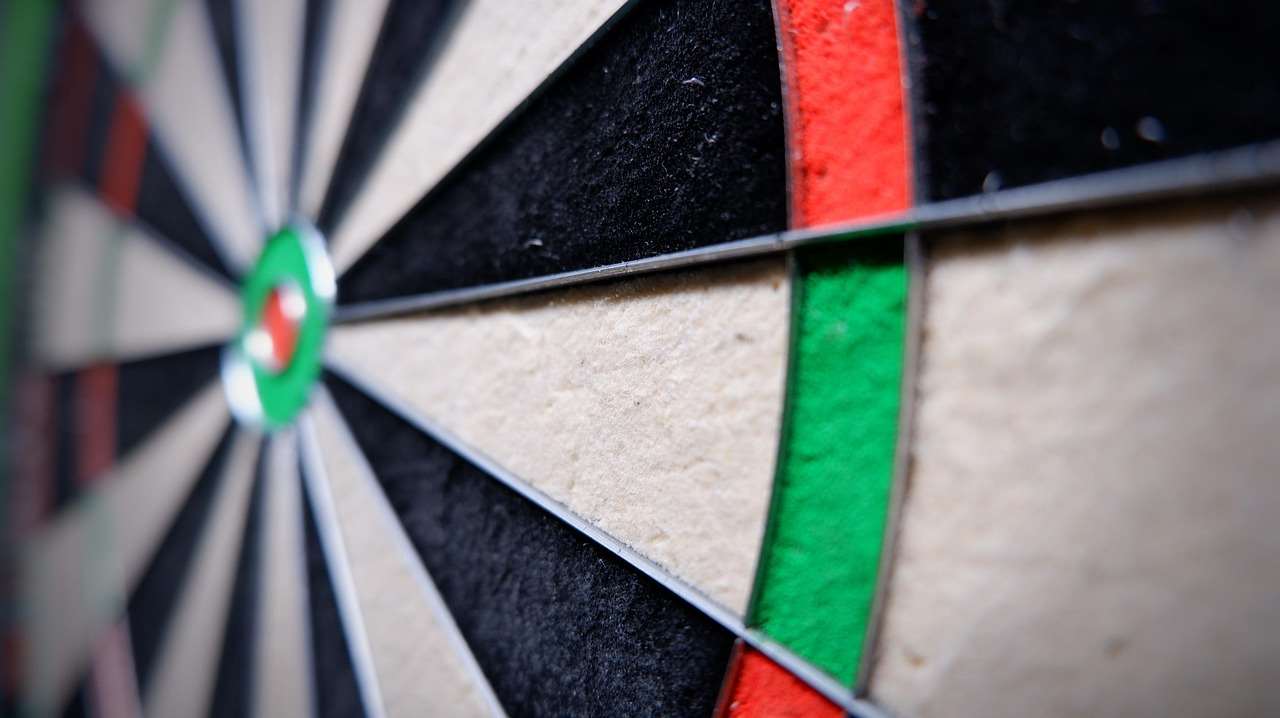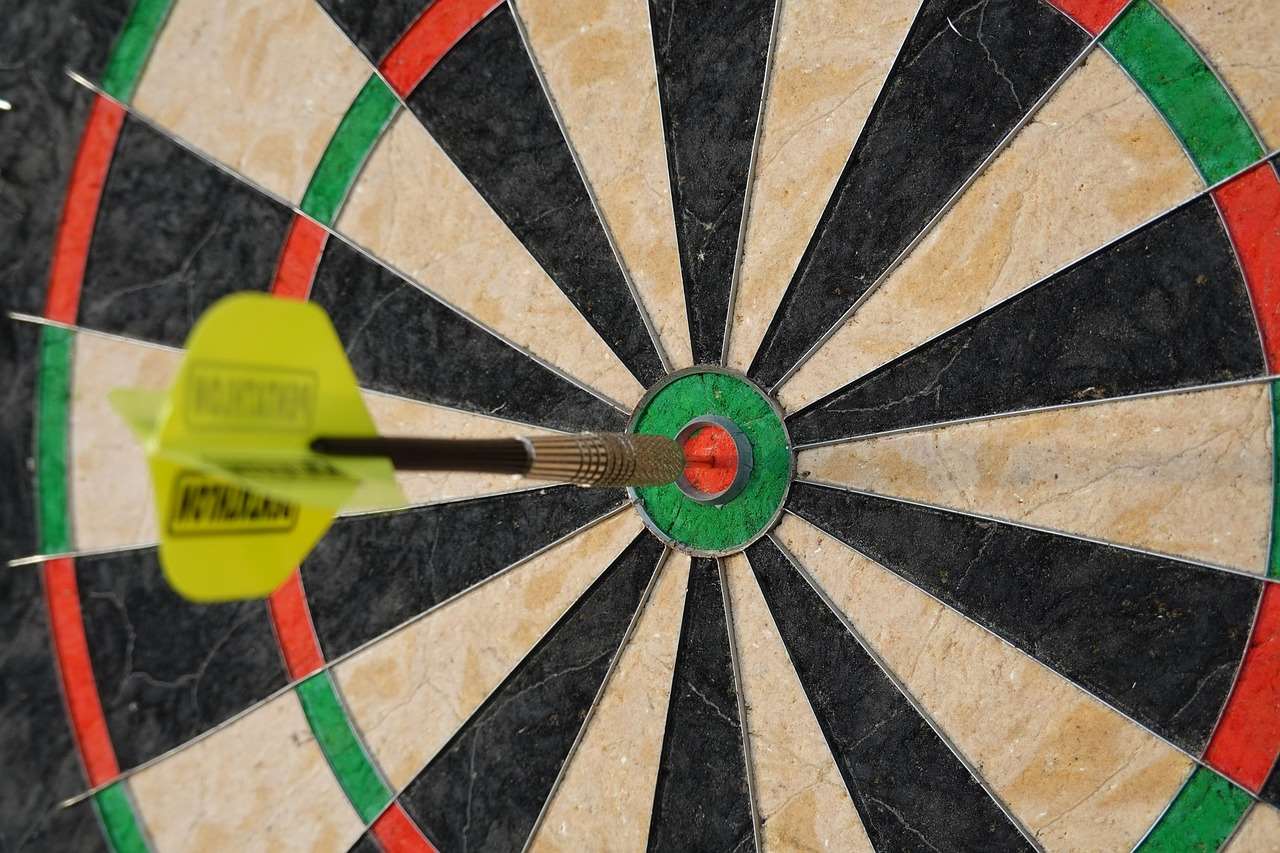Want to make online darts accessible to everyone? This online darts accessibility WCAG guide provides a comprehensive overview of how to ensure your virtual dartboards and platforms comply with the Web Content Accessibility Guidelines (WCAG), creating a more inclusive experience. We’ll cover everything from website design to in-game features, ensuring no one is left out of the fun.
⚠️ Still Using Pen & Paper (or a Chalkboard)?! ⚠️
Step into the future! The Dart Counter App handles all the scoring, suggests checkouts, and tracks your stats automatically. It's easier than you think!
Try the Smart Dart Counter App FREE!Ready for an upgrade? Click above!
Why Online Darts Accessibility Matters: Embracing WCAG Principles
Inclusivity isn’t just a buzzword; it’s a fundamental principle that should guide all online experiences, including the world of online darts. Ignoring website accessibility can exclude a significant portion of potential users, including those with visual, auditory, motor, or cognitive impairments. By adhering to WCAG principles, you not only expand your audience but also create a better, more user-friendly experience for everyone.
Think about it: a player with low vision might struggle to see the dartboard clearly. Someone with a motor impairment may find it difficult to accurately aim and throw. And individuals with cognitive disabilities could be overwhelmed by complex interfaces or unclear instructions. Implementing accessibility best practices addresses these challenges head-on, making online darts enjoyable for a broader audience. We can also look into the Business of Darts
WCAG, or Web Content Accessibility Guidelines, are internationally recognized standards for making web content more accessible to people with disabilities. They are organized around four main principles:
- Perceivable: Information and user interface components must be presentable to users in ways they can perceive. This includes providing text alternatives for non-text content, offering captions for videos, and ensuring sufficient color contrast.
- Operable: User interface components and navigation must be operable. This means users should be able to navigate your website and interact with its elements using a variety of input methods, such as a keyboard, mouse, or assistive technology.
- Understandable: Information and the operation of the user interface must be understandable. Use clear and concise language, provide helpful instructions, and avoid unnecessary complexity.
- Robust: Content must be robust enough that it can be interpreted reliably by a wide variety of user agents, including assistive technologies. This means using standard HTML and CSS, and ensuring your website is compatible with different browsers and devices.

A Practical Online Darts Accessibility WCAG Guide: Implementing Key Features
Let’s get down to the practicalities. Here’s how you can implement key accessibility features in your online darts platform, turning this online darts accessibility WCAG guide into an actionable plan:
Visual Accessibility
Visual impairments are diverse, so your approach needs to be comprehensive. Here are a few key areas:
- Alternative Text for Images: Every image on your site, including the dartboard, darts, and player avatars, needs descriptive alt text. This allows screen readers to convey the image’s content to visually impaired users. For example, alt=”Close-up of a dart hitting the triple 20.”
- Color Contrast: Ensure sufficient color contrast between text and background. Use tools like the WebAIM Color Contrast Checker to verify that your color combinations meet WCAG standards.
- Zoom Functionality: Allow users to easily zoom in on the dartboard and other elements without loss of functionality. Ensure that the zoomed-in content remains readable and usable.
- Customizable Display Options: Provide options for users to adjust font size, color schemes, and other display settings to their preferences. Consider offering a “high contrast” mode.
- Clear Visual Cues: Use clear visual cues, such as highlighting, animation, or changes in shape, to indicate the current state of the game, selected options, and other important information. But ensure these cues are also accessible to those who cannot see them.
Auditory Accessibility
Auditory accessibility is crucial for players who are deaf or hard of hearing:
- Captions and Transcripts: Provide captions for all video and audio content, including tutorials, commentary, and in-game sound effects. Also, offer transcripts for audio-only content.
- Visual Alternatives for Audio Cues: Replace important audio cues with visual alternatives. For instance, a visual flash could accompany the sound of a dart hitting the board.
- Volume Control: Allow users to independently adjust the volume of different sound elements, such as background music, sound effects, and voice chat.
Motor Accessibility
Players with motor impairments may require alternative input methods. Consider these strategies, which are vital for **adaptive gaming**:
- Keyboard Navigation: Ensure that all interactive elements of the game can be controlled using the keyboard alone. This includes navigating menus, aiming and throwing darts, and interacting with other players.
- Switch Access: Support switch access, which allows users to control the game using one or more switches.
- Customizable Controls: Provide options for users to customize the game’s controls to their preferences. This includes remapping keys, adjusting sensitivity, and creating macros.
- Assistive Aiming: Consider implementing assistive aiming features, such as automatically snapping the cursor to the dartboard or providing guidance lines.
Cognitive Accessibility
Cognitive accessibility focuses on making content easy to understand and use:
- Clear and Concise Language: Use clear and concise language throughout the game. Avoid jargon, technical terms, and complex sentence structures.
- Consistent Navigation: Maintain a consistent navigation structure throughout the game. This makes it easier for users to find what they’re looking for.
- Helpful Instructions: Provide helpful instructions and tutorials that explain how to play the game and use its features.
- Avoid Distractions: Minimize distractions, such as flashing lights, animations, and excessive sound effects, that can be overwhelming for users with cognitive disabilities.

Testing and Validating Your Online Darts Accessibility
Implementing accessibility features is just the first step. You need to test and validate your efforts to ensure they are effective.
- Automated Testing Tools: Use automated testing tools, such as WAVE and axe, to identify common accessibility issues. These tools can quickly scan your website and identify violations of WCAG standards.
- Manual Testing: Conduct manual testing using a screen reader and other assistive technologies. This will help you identify issues that automated tools may miss.
- User Testing: Involve users with disabilities in the testing process. Their feedback is invaluable for identifying areas where your accessibility efforts fall short. Consider conducting usability testing sessions or surveys.
Regular testing is crucial. Accessibility isn’t a one-time fix but an ongoing process. Web standards evolve, user needs change, and new features are added. Regularly auditing your platform ensures continued compliance and a consistently positive experience for all players.
Beyond Compliance: Creating an Inclusive Online Darts Community
While complying with WCAG is essential, true accessibility goes beyond simply meeting the minimum requirements. It’s about fostering an inclusive online darts community where everyone feels welcome and respected.
- Provide Accessibility Documentation: Create clear and concise accessibility documentation that explains the accessibility features of your game and how to use them.
- Offer Accessibility Support: Provide accessibility support to users who need it. This could include a dedicated email address, phone number, or online forum.
- Train Your Staff: Train your staff on accessibility best practices. This will ensure that everyone on your team is equipped to create accessible content and provide accessible support.
- Promote Accessibility Awareness: Promote accessibility awareness within your community. This could include publishing blog posts, creating videos, or hosting online events.

Related Standards and Guidelines
While WCAG is the primary standard for web accessibility, several other related standards and guidelines can be helpful. Understanding these concepts contributes to achieving comprehensive **digital inclusion**:
- Section 508: A U.S. law that requires federal agencies to make their electronic and information technology accessible to people with disabilities.
- EN 301 549: A European standard that specifies the accessibility requirements for ICT products and services.
- WAI-ARIA: A set of technical specifications that provide ways to make web content more accessible to people with disabilities, particularly dynamic content and advanced user interface controls developed with HTML, CSS, and JavaScript.
The Future of Accessible Online Darts
The landscape of online accessibility is constantly evolving. New technologies and assistive devices are emerging, and user expectations are rising. To stay ahead of the curve, it’s crucial to stay informed about the latest trends and best practices.
Consider these emerging areas:
- AI-powered Accessibility: Artificial intelligence is being used to automate some accessibility tasks, such as generating alt text and captions.
- Virtual Reality Accessibility: As virtual reality becomes more mainstream, it’s important to ensure that VR experiences are accessible to people with disabilities.
- Personalized Accessibility: The ability to personalize accessibility settings based on individual user needs is becoming increasingly important.

This online darts accessibility WCAG guide hopefully gives you some clarity. By prioritizing accessibility, you not only comply with legal requirements but also tap into a larger audience and foster a more inclusive and welcoming online community. This proactive approach benefits everyone involved.
Remember, a commitment to accessibility reflects positively on your brand. It signals that you value all users, regardless of their abilities. This creates a positive feedback loop, attracting more players and fostering a more loyal and engaged community. Remember the darts tv rights value.
Selecting Accessible Technology and Platforms
Choosing the right technology and platforms can significantly impact the accessibility of your online darts experience. Prioritize systems with built-in accessibility features and robust support for assistive technologies.
- Evaluate Platform Accessibility: Before committing to a particular platform, thoroughly evaluate its accessibility features. Check for keyboard navigation, screen reader compatibility, and customizable display options.
- Choose Accessible Development Tools: Select development tools that support the creation of accessible content. Look for tools with built-in accessibility checkers and support for WAI-ARIA.
- Consider Third-Party Accessibility Solutions: Explore third-party accessibility solutions that can enhance the accessibility of your existing platform. These solutions can provide features such as automatic alt text generation, captioning, and keyboard navigation.

Continuous Improvement and Feedback Loops
Accessibility is an ongoing journey, not a destination. Establish a process for continuous improvement and actively solicit feedback from users with disabilities.
- Regular Accessibility Audits: Conduct regular accessibility audits to identify and address any new accessibility issues.
- User Feedback Mechanisms: Provide multiple channels for users to provide feedback on the accessibility of your platform. This could include a dedicated email address, phone number, or online forum.
- Accessibility Training: Provide ongoing accessibility training to your staff to keep them up-to-date on the latest best practices.
By embracing a culture of continuous improvement and actively seeking feedback, you can ensure that your online darts experience remains accessible to everyone, and you are following our online darts accessibility WCAG guide.
Conclusion: Embracing Accessibility in Online Darts
Making online darts accessible isn’t just about adhering to guidelines; it’s about building a more inclusive and welcoming community. By implementing the strategies outlined in this online darts accessibility WCAG guide, you can ensure that everyone has the opportunity to enjoy the game. Take the first step today: audit your platform, implement key accessibility features, and solicit feedback from users with disabilities. The future of online darts is accessible – be a part of it!
Hi, I’m Dieter, and I created Dartcounter (Dartcounterapp.com). My motivation wasn’t being a darts expert – quite the opposite! When I first started playing, I loved the game but found keeping accurate scores and tracking stats difficult and distracting.
I figured I couldn’t be the only one struggling with this. So, I decided to build a solution: an easy-to-use application that everyone, no matter their experience level, could use to manage scoring effortlessly.
My goal for Dartcounter was simple: let the app handle the numbers – the scoring, the averages, the stats, even checkout suggestions – so players could focus purely on their throw and enjoying the game. It began as a way to solve my own beginner’s problem, and I’m thrilled it has grown into a helpful tool for the wider darts community.